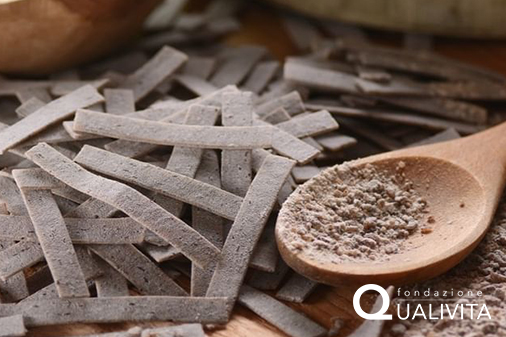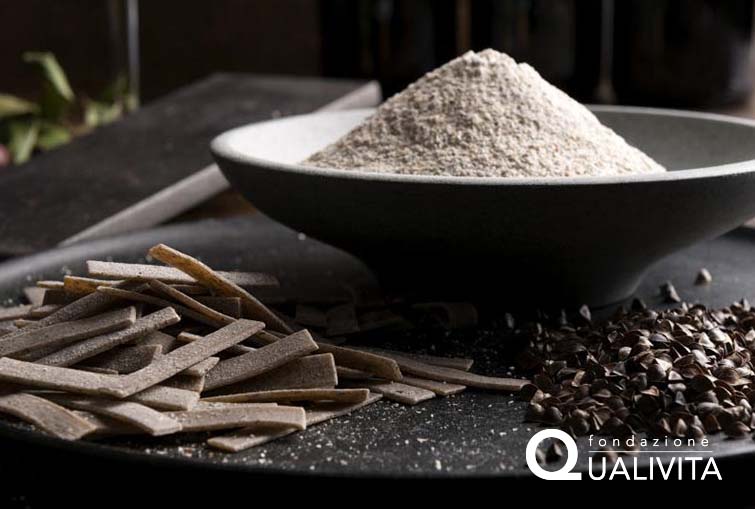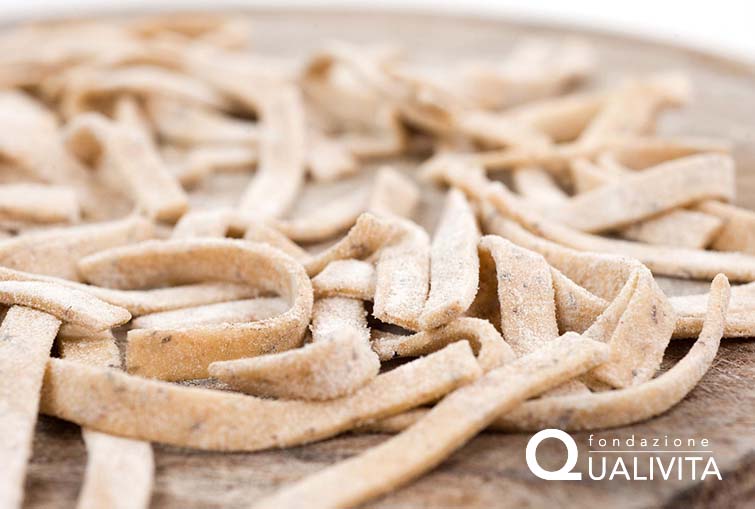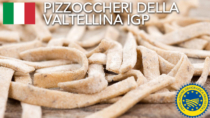Description
Pizzoccheri della Valtellina PGI is pasta obtained from a mixture of at least 20% buckwheat flour mixed with flours made from other types of grains. Both dry and fresh pasta may put on the market. The following types of dry pasta are permitted: tagliatelle ribbons, tagliatelle nests and gnocchi. The fresh type is only available as tagliatelle.
Production Area
The production area of Pizzoccheri della Valtellina PGI is within the entire territory of the Province of Sondrio, in the Lombardy region.
Production Method
The production process for the fresh type of Pizzoccheri della Valtellina PGI consists of the following stages: making the pasta dough, which is obtained by mixing the buckwheat flour and soft wheat flour with water; producing even pasta sheets and shaping the pasta. For the dry type, the production processes are divided into: making the pasta dough, obtained by mixing the buckwheat flour and durum wheat semolina with water; extrusion, which gives the pasta an even structure thanks to the creation of a protein lattice; rolling, with the exception of gnocchi; drying.
Appearance and Flavour
Dry Pizzoccheri della Valtellina PGI have a length of 3-6 cm (ribbon tagliatelle) and 1.6-2.2 cm (gnocchi). The length of the tagliatelle nests and the fresh pasta varies. After processing, the dry pasta is hard and the fresh pasta semi-hard. The colour of the pasta ranges from light to dark brown, and parts of the outer layers have hazelnut brown/grey hues, given to the buckwheat. After being cooked in salted water, they have a delicate flavour, typical of products obtained with buckwheat and other flours.
History
The tradition of Pizzoccheri della Valtellina PGI derives from the widespread use of buckwheat as a key ingredient in the local cuisine. The first document testifying to the use of buckwheat in Valtellina dates back to 1616, but it was only during the nineteenth century that crops also became widespread in what were essentially unproductive areas. The first written evidence attesting to the production of Pizzoccheri in the Province of Sondrio can be found in several inventories: one from 1750 refers to “una scarella per li Pizzoccheri e il rodelino per li ravioli", and another from 1775 to “le resene per li Pizzoccheri". The documentation increases over the following centuries, confirming the link between Pizzoccheri della Valtellina and the Province of Sondrio.
Gastronomy
Pizzoccheri della Valtellina PGI should be kept in a cool, dry place. In traditional recipes, many different ingredients from Valtellina’s typical crops and produce are used for the sauce, such as butter, cheese, potatoes and vegetables like cabbage.
Marketing
The product is marketed as Pizzoccheri della Valtellina PGI. It is available as fresh pasta and dry pasta, sold in the place of production and/or in retail stores. The fresh product can be packed in trays and bags, both with a modified atmosphere. The dried product is packed in long cardboard boxes or bags. The type of pasta may be indicated on the packet.
Distinctive Features
Pizzoccheri della Valtellina PGI are a typical food in the Province of Sondrio and have acquired not only economic importance, but also cultural value, to the extent of becoming a popular reference linked to tradition and celebrated with various festivals, the most famous being the “Pizzocchero d’Oro” festival in Teglio.














